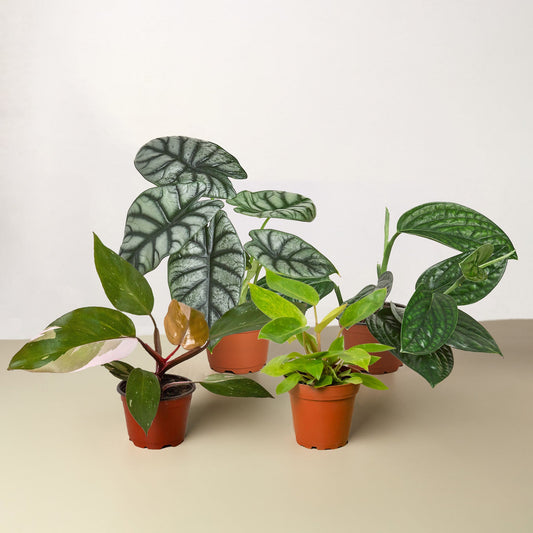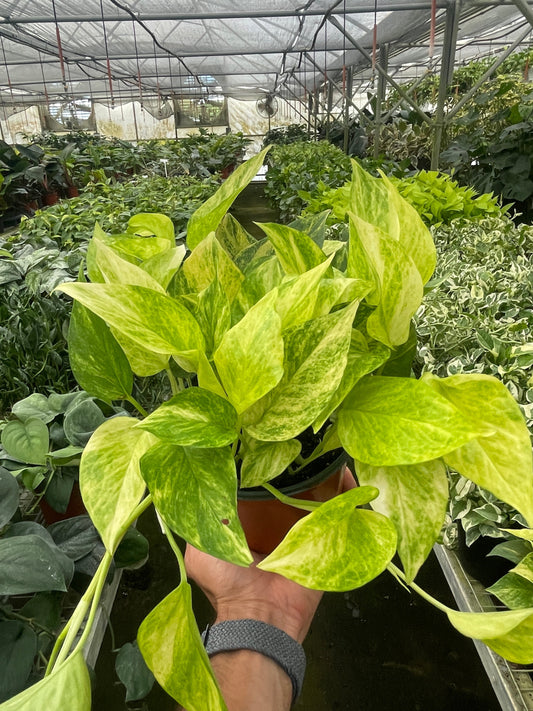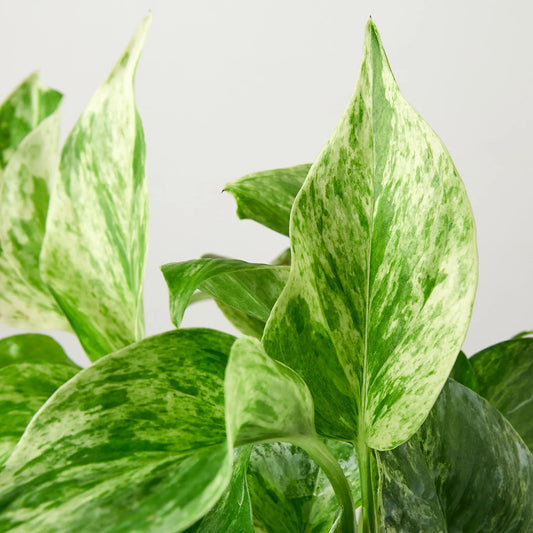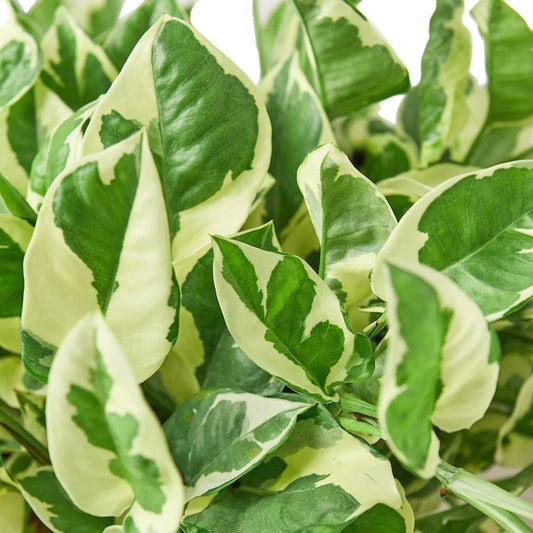Polka Dot Begonia Aerial Roots: Everything You Need to Know
Cafe Planta Team
Polka Dot Begonia, known for its striking foliage and charming personality, often surprises its owners with something unusual—its aerial roots. These roots can be a bit of a mystery to those who aren't familiar with them, leading to questions and curiosity. But fear not! We'll unravel everything you need to know about these fascinating features and how they contribute to your plant's health.
In this article, you'll learn about what aerial roots are, why your Polka Dot Begonia might develop them, and how you can care for them. We'll also discuss the benefits and potential challenges these roots present. So, let's embark on this leafy journey and become better plant parents together!
What Are Aerial Roots?
Aerial roots are those curious little appendages you might notice growing from the stems of some plants, including your beloved Polka Dot Begonia. Unlike the roots that grow underground, these roots sprout in the open air. They can appear as small, nubby protrusions on the stems and often cause plant lovers to scratch their heads, wondering if something's amiss.
These roots serve a variety of purposes. For some plants, they're a means to gather moisture and nutrients directly from the air, while for others, they provide support by anchoring the plant to a surface. In the case of Polka Dot Begonia, aerial roots are typically a sign that your plant is adapting to its environment, whether by seeking out additional moisture or trying to stabilize itself.
Now, you might be wondering if these roots are a cause for concern. The good news is that they are usually harmless and can even indicate that your plant is thriving. However, they do require a bit of understanding to ensure they don't become problematic. So, let's dive a bit deeper into why these roots develop and how you can care for them.
Why Do Polka Dot Begonias Develop Aerial Roots?
Polka Dot Begonias, like many tropical plants, have evolved to grow in environments where aerial roots are advantageous. In their natural habitat, these roots help them cling to trees and absorb moisture from the humid air. When you bring one into your home, it might try to replicate some of these natural behaviors, leading to the development of aerial roots.
There are a few common triggers for aerial root growth:
- Humidity: High humidity levels can encourage your plant to grow aerial roots as it seeks to optimize moisture absorption.
- Support: If your plant is reaching or leaning, it might develop aerial roots to help anchor itself.
- Light: A plant that is stretching towards a light source might use aerial roots to stabilize its growth.
- Nutrient Seeking: Occasionally, a plant might grow these roots if it's searching for more nutrients.
Understanding these triggers can help you better manage the environment for your Polka Dot Begonia. Adjusting light, humidity, and providing proper support can ensure that these roots remain a positive feature rather than a concern.
Caring for Aerial Roots
So, you've noticed these aerial roots popping up, and now you're wondering how best to care for them. The good news is that they don't require too much extra attention, but a few considerations will ensure they don't become an issue.
First and foremost, resist the urge to trim them. While they might seem unnecessary, they play a vital role in your plant's health and stability. Here's how to keep them happy and healthy:
- Humidity: Ensure the air isn't too dry. A humidifier or regular misting can help maintain adequate moisture levels. Remember, these roots love the opportunity to absorb moisture from the air.
- Support: If your plant is leaning or growing tall, consider using a stake or trellis to provide extra support. This will prevent the plant from toppling over and allow the roots to stabilize the plant effectively.
- Environment: Keep an eye on how your plant is responding to its environment. If it's reaching towards a light source, consider adjusting its placement to encourage balanced growth.
- Nutrients: A well-balanced fertilizer can ensure your plant isn't reaching out for nutrients it lacks. Feed your Polka Dot Begonia every couple of months during the growing season to keep it well-nourished.
By providing the right environment and care, those aerial roots will continue to be a testament to your plant's adaptability and resilience.
Benefits of Aerial Roots
You might be wondering what advantages these aerial roots offer your Polka Dot Begonia. While they may seem like an oddity, they actually provide several benefits that can contribute to the overall health and growth of your plant.
Here are a few reasons why you might want to embrace these quirky roots:
- Improved Stability: As your plant grows, aerial roots can help anchor it, preventing toppling and breakage, especially if it becomes top-heavy.
- Enhanced Moisture Absorption: In humid environments, these roots can absorb additional moisture, reducing the risk of dehydration.
- Adaptation to Environment: Aerial roots are a sign that your plant is adjusting to its surroundings, which can be a positive indicator of its health and ability to thrive.
- Additional Nutrient Uptake: In some cases, these roots might help the plant access nutrients from the air or surrounding environment.
These benefits highlight why it's important to allow aerial roots to flourish, offering your plant the opportunity to grow stronger and healthier.
Potential Challenges with Aerial Roots
While aerial roots are generally a positive sign, they can present some challenges if not managed properly. It's important to be aware of these potential issues so you can address them promptly and keep your Polka Dot Begonia in tip-top shape.
Here are a few challenges to keep in mind:
- Overgrowth: In some cases, aerial roots might become overly abundant, which can be unsightly or lead to crowding. If this happens, consider adjusting your plant's environment to minimize root growth.
- Dry Conditions: If the air is too dry, aerial roots might struggle to absorb moisture, leading to dehydration. Ensure your home has adequate humidity levels to prevent this problem.
- Weak Anchoring: If your plant is heavily reliant on aerial roots for support but lacks a stable base, it might struggle to stay upright. Providing additional support with stakes or trellises can help.
By staying aware of these potential challenges, you can ensure your Polka Dot Begonia's aerial roots remain a positive feature rather than a hindrance.
Creating an Ideal Environment for Aerial Roots
To truly embrace and encourage healthy aerial roots, it's essential to create an environment that caters to their needs. Think of it as setting the stage for a thriving performance, where your plant can put its best roots forward.
Here are some tips for creating an ideal environment:
- Humidity: Aim for a humidity level of at least 50% to keep your Polka Dot Begonia comfortable. This can be achieved with a humidifier, regular misting, or by placing a tray of water near the plant.
- Light: While Polka Dot Begonias prefer bright, indirect light, make sure they're not straining towards a single light source. Rotate the plant occasionally to encourage even growth.
- Support Structures: Consider using stakes or trellises to support your plant as it grows. This will help the aerial roots anchor effectively and prevent any toppling.
- Soil and Fertilizer: Ensure your plant is potted in a well-draining soil mix and receives balanced nutrients. Fertilizing during the growing season can help provide all the essential elements for growth.
By fine-tuning these environmental factors, you can watch your Polka Dot Begonia thrive with healthy, well-managed aerial roots.
Integrating Polka Dot Begonias into Your Home Decor
Aside from their botanical intrigue, Polka Dot Begonias can be a stunning addition to your home decor. Their unique foliage and aerial roots can add an extra layer of visual interest, making them a conversation starter for guests and a joy for any plant lover.
Here are a few ideas to incorporate Polka Dot Begonias into your living space:
- Accent Pieces: Use a Polka Dot Begonia as a focal point on a shelf or in a plant stand. Its distinctive leaves and aerial roots can create an eye-catching display.
- Hanging Gardens: Consider placing your Polka Dot Begonia in a hanging basket, allowing the aerial roots to dangle freely. This setup can mimic its natural environment and add a whimsical touch to your decor.
- Group Plantings: Pair your Polka Dot Begonia with other houseplants to create a lush, varied display. The contrast of textures and colors can enhance the visual appeal of your plant collection.
By creatively integrating Polka Dot Begonias into your decor, you can enjoy both their beauty and their botanical uniqueness.
Common Myths About Aerial Roots
When it comes to plant care, myths and misconceptions often abound, and aerial roots are no exception. It's time to set the record straight so you can care for your Polka Dot Begonia with confidence and clarity.
Here are some common myths debunked:
- Aerial Roots Indicate Poor Health: Many people mistakenly believe that aerial roots are a sign of a struggling plant. In reality, they're often a sign of adaptability and health, especially when the plant is responding to its environment.
- They Should Be Trimmed: Pruning aerial roots isn't necessary and can actually harm the plant. These roots serve important functions, so it's best to let them be.
- All Plants with Aerial Roots Need High Humidity: While many tropical plants enjoy higher humidity, not all plants with aerial roots require it. It's essential to understand your specific plant's needs to provide the right care.
By dispelling these myths, you can focus on providing optimal care for your Polka Dot Begonia and appreciate its aerial roots for the unique features they are.
Conclusion
In summary, aerial roots are a fascinating and beneficial aspect of your Polka Dot Begonia's growth. By understanding their purpose and how to care for them, you can ensure your plant remains healthy and vibrant. Whether they're providing stability, absorbing moisture, or adding a unique aesthetic, aerial roots are an integral part of your plant's life.
At Cafe Planta, we're here to assist you with all your plant care needs. If you have any questions about your plants, feel free to email us or send a message on Instagram. We believe that plants bring people together and help us connect with nature. Whether you're a seasoned plant parent or just beginning your journey, we're excited to share our passion for plants with you and help cultivate your own beautiful plant collection.



















